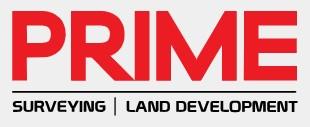In the world of real estate and property ownership, title boundaries serve as the invisible lines that delineate one's ownership rights and responsibilities. Understanding these boundaries is essential for property owners, buyers, and developers alike, as they form the basis for land use, development projects, and legal disputes. In this blog, we embark on a journey to demystify title boundaries, exploring their significance, how they are established, and the importance of accurately defining and respecting them.
What Are Title Boundaries? Title boundaries, also known as property boundaries or parcel lines, represent the legal limits of a property owner's rights and responsibilities. These boundaries define the extent of a property's ownership, including its dimensions, area, and geographical location. Title boundaries play a crucial role in determining property rights, such as the right to exclusive possession, use, and enjoyment of land, as well as the obligation to maintain and manage the property in accordance with legal regulations and requirements.
Establishing Title Boundaries:
Title boundaries are typically established through a process of land surveying and legal documentation. Licensed surveyors use specialized equipment and techniques to accurately measure and map the physical features of a property, including its boundaries, corners, and landmarks. The results of the survey are then recorded in a document known as a property survey or land survey plat, which provides a detailed depiction of the property's boundaries and characteristics.
Once established, title boundaries are legally recognized and documented in the property's title deed, which serves as official proof of ownership. The title deed includes a description of the property's boundaries, often using metes and bounds, a system of describing land by specifying its boundaries and angles relative to landmarks or reference points.
Importance of Accurate Title Boundaries: Accurate title boundaries are essential for several reasons:
-
Property Ownership: Title boundaries determine the extent of a property owner's rights and responsibilities, including the right to exclusive possession, use, and enjoyment of the land. Accurate boundary lines ensure clarity and certainty regarding ownership rights, helping to prevent disputes and conflicts with neighboring property owners.
-
Land Use and Development: Property boundaries play a crucial role in determining land use and development rights. Zoning regulations, building codes, and other regulatory requirements are based on property boundaries, influencing the type and scale of development allowed on a property. Accurate boundary information is essential for planning and executing development projects in compliance with legal and regulatory requirements.
-
Legal Disputes: Clear and accurately defined title boundaries help to mitigate legal disputes and conflicts related to property ownership. Disputes over boundary lines, encroachments, easements, and other property rights can arise between neighboring property owners, requiring resolution through legal means. Accurate boundary information serves as evidence in legal proceedings, helping to clarify ownership rights and responsibilities.
Conclusion:
In conclusion, title boundaries are the cornerstone of property ownership and land management. Understanding the significance of title boundaries, how they are established, and the importance of accurately defining and respecting them is essential for property owners, buyers, developers, and legal professionals alike. By ensuring clarity, certainty, and compliance with legal requirements, accurate title boundaries contribute to the stability, integrity, and sustainability of real estate transactions and property rights. As guardians of property boundaries, it is crucial for all stakeholders to recognize the importance of accurate boundary information and to seek professional assistance from licensed surveyors and legal experts when needed.


